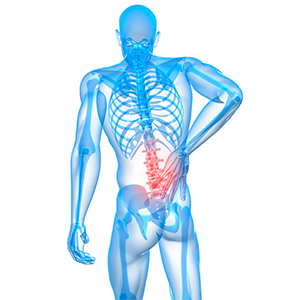Infantile Colic, GERD, Failure to Thrive and Breastfeeding Difficulties Helped with Chiropractic
On June 7, 2018, the Journal of Pediatric, Maternal & Family Health published a case study documenting chiropractic helping an infant suffering with infantile colic, gastroesophageal reflux disease (GERD), failure to thrive, and breastfeeding difficulties.
The study begins by acknowledging that chiropractic is growing in popularity as a non-allopathic form of healthcare. The authors report that most adults seeking chiropractic do so for musculoskeletal type complaints while children who are brought to the chiropractor usually are seeking help for non-musculoskeletal conditions.
 It
may be common for infants to spit up after a meal, however,
frequent vomiting associated with discomfort and difficulty
feeding or weight loss is considered more serious and is
known as gastroesophageal reflux disease, (GERD). According
to the American Family Physician, "Infantile colic, is
defined as episodes of crying for more than three hours a
day, for more than three days a week, for three weeks in an
otherwise healthy child."
It
may be common for infants to spit up after a meal, however,
frequent vomiting associated with discomfort and difficulty
feeding or weight loss is considered more serious and is
known as gastroesophageal reflux disease, (GERD). According
to the American Family Physician, "Infantile colic, is
defined as episodes of crying for more than three hours a
day, for more than three days a week, for three weeks in an
otherwise healthy child."
The term "failure to thrive" is used when an infant fails to gain weight or experiences an inappropriate weight loss. There are a number of mechanisms that can facilitate this problem including breastfeeding issues which prevent the infant from getting proper nutrition.
In this case, a 3½-month-old infant girl was brought to the chiropractor by her parents. The girl's mother reported that her infant daughter suffered from severe infantile colic, acid reflux, had breastfeeding difficulties, and was medically diagnosed as failure to thrive.
It was reported that starting at 3-weeks of age, the infant began struggling to eat, pulling away from her mother’s breasts, arching her back, and crying inconsolably. Medical physicians prescribed a number of medications that had no effect. At one point, the infant was hospitalized due to her weight loss.
A chiropractic examination was performed which included age and size appropriate spinal palpation with a recumbent postural analysis. Subluxations were determined to be present and a specific pediatric adjustment was given.
Following the infant girl's first chiropractic adjustment, her mother reported that her daughter's breastfeeding latch had improved. After the second adjustment, it was reported that the baby began to play more. By the fourth adjustment, the baby was rolling over, had increased the amount of breast milk she would consume by 50%, and began babbling. Additionally, the baby's acid reflux had improved and she was less fussy. By the eighth visit, the baby had gained enough weight that her pediatrician was no longer concerned about her weight and canceled a referral to a gastrointestinal specialist.
In their conclusion the authors wrote, "We reported the successful chiropractic care of 3½-month old female suffering from acid reflux and medically diagnosed as failure to thrive. This study opens the possibility that similar patients may benefit from chiropractic care. This study provides supporting evidence that infants presenting similarly may benefit from management of vertebral subluxation."
 Human
TL length is best explained on the T.A Sciences website,
"Telomeres are an essential part of human cells that affect
how our cells age. Telomeres are the caps at the end of each
strand of DNA that protect our chromosomes, like the plastic
tips at the end of shoelaces. Without the coating, shoelaces
become frayed until they can no longer do their job, just as
without telomeres, DNA strands become damaged and our cells
can’t do their job."
Human
TL length is best explained on the T.A Sciences website,
"Telomeres are an essential part of human cells that affect
how our cells age. Telomeres are the caps at the end of each
strand of DNA that protect our chromosomes, like the plastic
tips at the end of shoelaces. Without the coating, shoelaces
become frayed until they can no longer do their job, just as
without telomeres, DNA strands become damaged and our cells
can’t do their job." According
to the Sjögren's Syndrome Foundation website, "Sjögren's is a
systemic autoimmune disease that affects the entire body. Along
with symptoms of extensive dryness, other serious complications
include profound fatigue, chronic pain, major organ involvement,
neuropathies and lymphomas." They estimate that there are more
than 4 million people presently living with this condition.
Women are nine times more likely to have this problem then are
men.
According
to the Sjögren's Syndrome Foundation website, "Sjögren's is a
systemic autoimmune disease that affects the entire body. Along
with symptoms of extensive dryness, other serious complications
include profound fatigue, chronic pain, major organ involvement,
neuropathies and lymphomas." They estimate that there are more
than 4 million people presently living with this condition.
Women are nine times more likely to have this problem then are
men.  It
is estimated that between 5% and 8% of children in the U.S have
ADHD. The condition is more common in girls than boys. As
children develop into adults, many seem to outgrow the symptoms
of ADHD. However, estimates are that 40-70% of children will
continue to experience symptoms of ADHD as adults. Accordingly,
between 3-6% of the adult population is estimated to have adult
ADHD. According to WebMD, every adult who is considered to have
ADHD had the condition as a child but may not have been
diagnosed with it.
It
is estimated that between 5% and 8% of children in the U.S have
ADHD. The condition is more common in girls than boys. As
children develop into adults, many seem to outgrow the symptoms
of ADHD. However, estimates are that 40-70% of children will
continue to experience symptoms of ADHD as adults. Accordingly,
between 3-6% of the adult population is estimated to have adult
ADHD. According to WebMD, every adult who is considered to have
ADHD had the condition as a child but may not have been
diagnosed with it.  An
ABC News article, also on the same day, reported that according
to the Institute of Medicine, medical errors account for between
100,000 to 200,000 deaths per year. They define burnout as
emotional exhaustion or depersonalization and note that it
occurs in more than half of the over 6600 doctor’s surveyed.
An
ABC News article, also on the same day, reported that according
to the Institute of Medicine, medical errors account for between
100,000 to 200,000 deaths per year. They define burnout as
emotional exhaustion or depersonalization and note that it
occurs in more than half of the over 6600 doctor’s surveyed.
 The
study starts by noting that low back problems commonly include
disc prolapse, spinal stenosis and low back pain. Disc
herniations can be categorized into three types. The first is a
disc protrusion without tearing of the fibers holding the
interior of the disc intact. The second type is an extrusion,
where the interior of the disc is pushed out of the disc, but is
held in place by the ligaments behind the disc. The third type
is called sequestration. This is where the disc materials escape
into the spinal canal. Approximately 95% of all low back disc
herniations occur at the last two discs in the spine, the L4-L5
level or the L5-Sacrum level.
The
study starts by noting that low back problems commonly include
disc prolapse, spinal stenosis and low back pain. Disc
herniations can be categorized into three types. The first is a
disc protrusion without tearing of the fibers holding the
interior of the disc intact. The second type is an extrusion,
where the interior of the disc is pushed out of the disc, but is
held in place by the ligaments behind the disc. The third type
is called sequestration. This is where the disc materials escape
into the spinal canal. Approximately 95% of all low back disc
herniations occur at the last two discs in the spine, the L4-L5
level or the L5-Sacrum level.